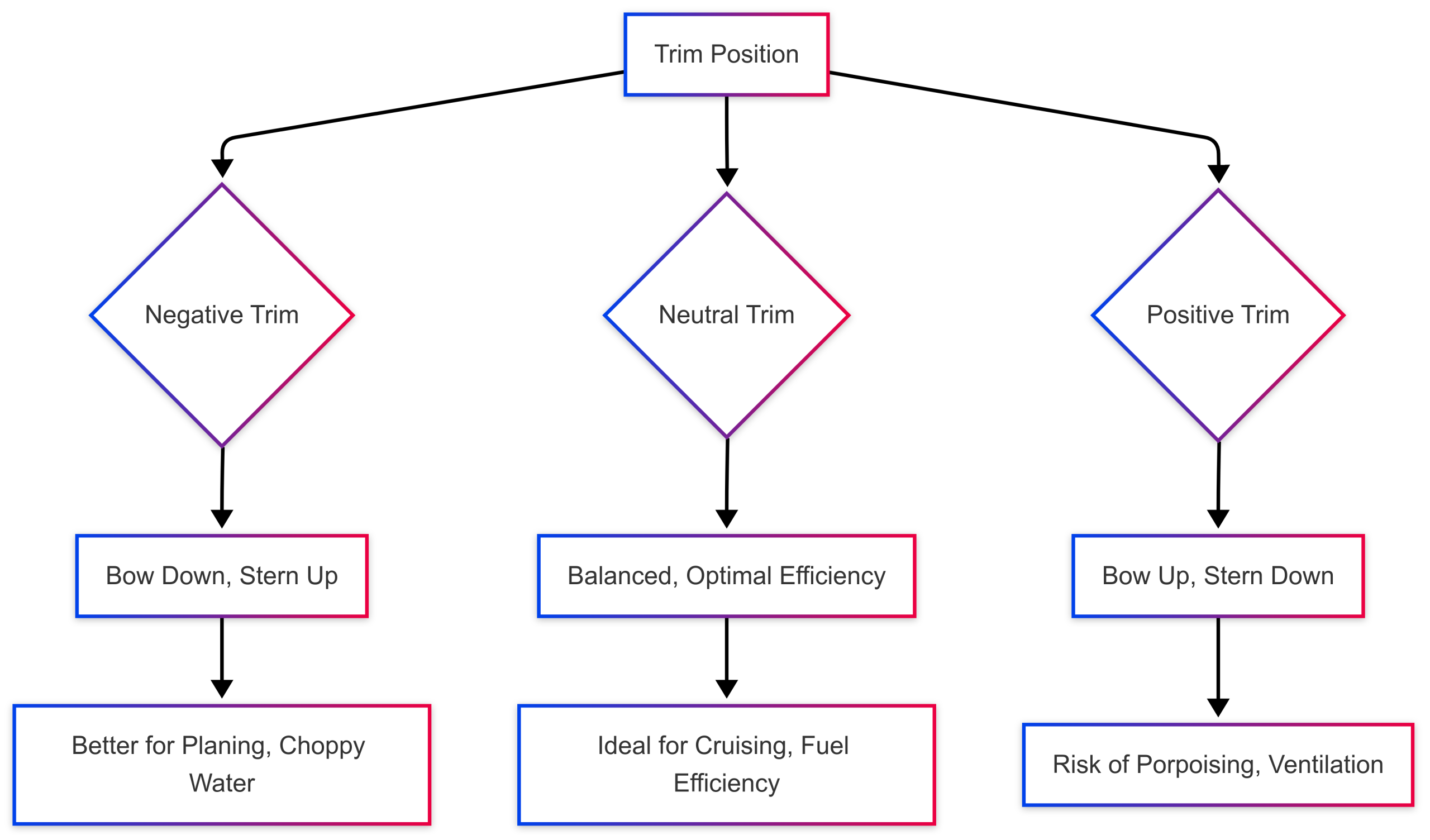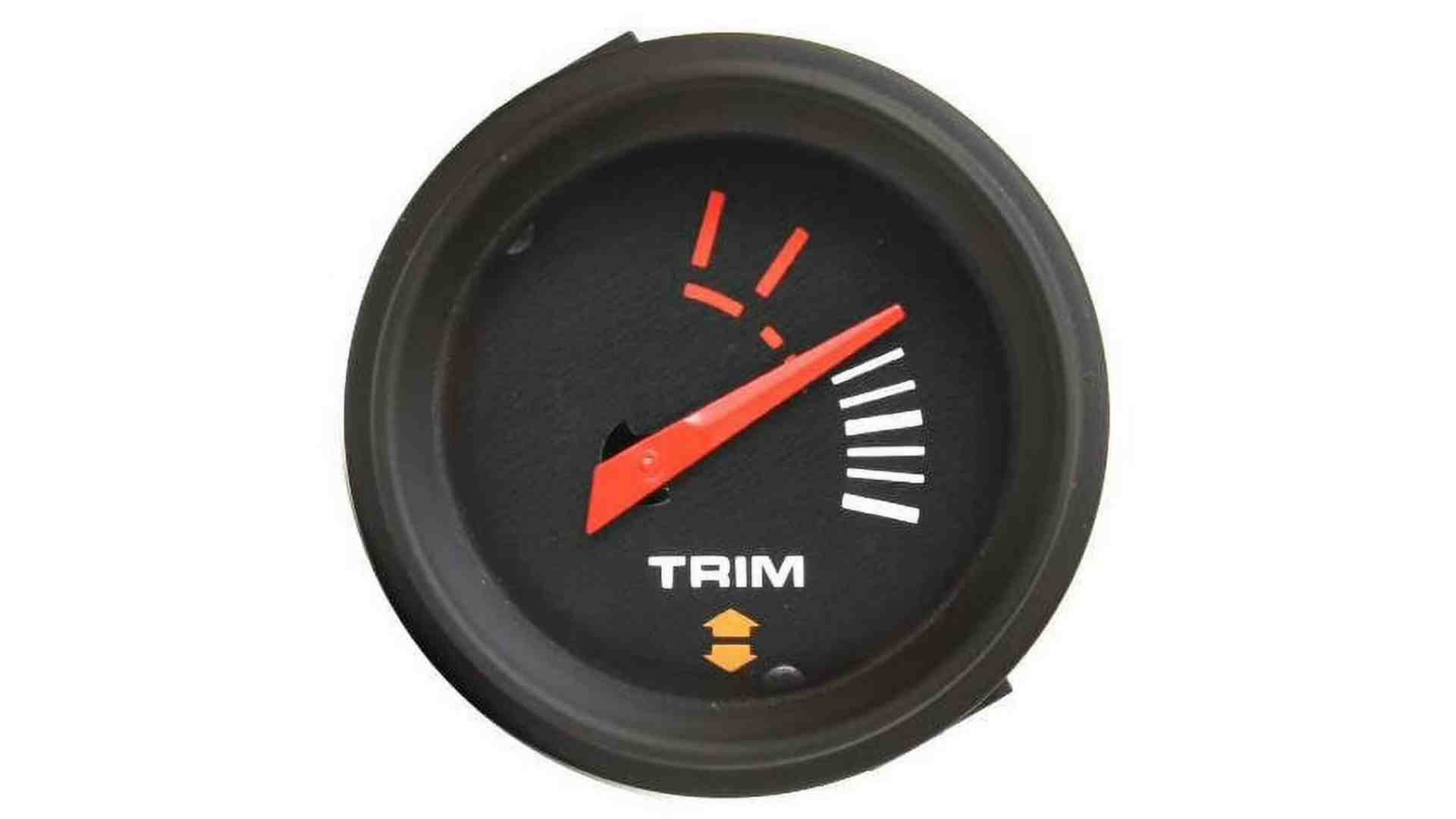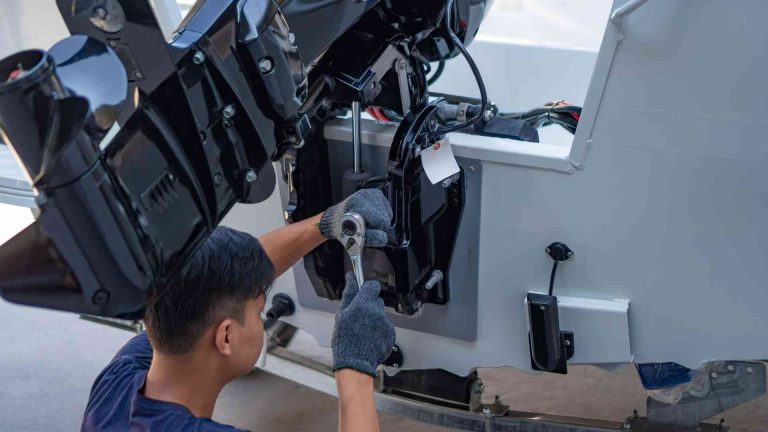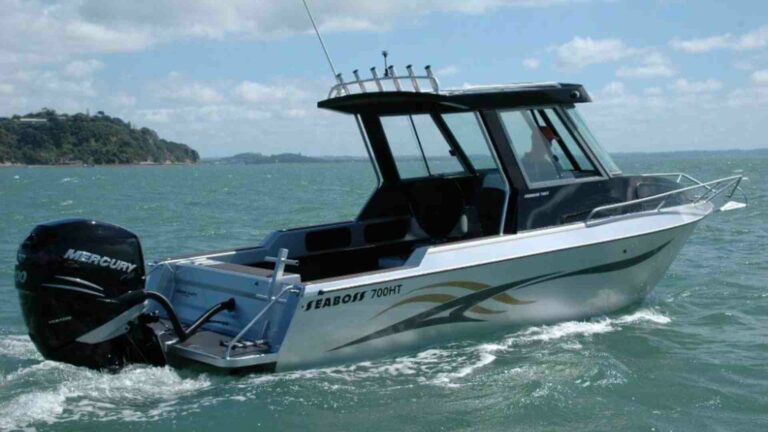Noob here. How important is the trim gauge?
Boating is an exhilarating experience that combines adventure, relaxation, and skill. For new boaters, understanding the various instruments on a boat’s dashboard can be overwhelming, particularly the trim gauge. Often overlooked by novices, the trim gauge is a critical tool that significantly impacts a boat’s performance, safety, and fuel efficiency. This comprehensive guide explores the importance of the trim gauge, its functionality, how to use it effectively, and why every boater—novice or experienced—should consider incorporating it into their vessel’s instrumentation. By the end, you’ll have a clear understanding of why the trim gauge is more than just a dashboard accessory and how it can elevate your boating experience.
What is Boat Trim?
To grasp the significance of a trim gauge, it’s essential to first understand the concept of trim in boating. Trim refers to the angle of the boat’s outboard motor or stern drive relative to the transom, the vertical surface at the stern of the boat where the engine is mounted. This angle directly influences how the boat interacts with the water, affecting its stability, speed, and fuel efficiency.
When the engine is trimmed improperly, it can lead to undesirable outcomes. For instance:
- Trimming too far in (engine close to the transom) can cause the bow to plow into the water, reducing speed and increasing fuel consumption. This is known as “bow steering,” where the boat becomes harder to control.
- Trimming too far out (engine angled away from the transom) can lift the bow excessively, causing the stern to squat and potentially leading to porpoising—a dangerous condition where the boat oscillates up and down, compromising stability.
The ideal trim position keeps the propeller shaft parallel to the water’s surface, ensuring the boat is balanced and operates at peak efficiency. Achieving this balance requires constant adjustments based on factors like boat load, water conditions, and speed, which is where the trim gauge becomes invaluable.
What is a Trim Gauge?
A trim gauge is an instrument mounted on the boat’s dashboard that displays the angle of the outboard motor or stern drive relative to the transom. It provides real-time feedback on the trim position, allowing the operator to make precise adjustments to optimize performance. The gauge typically features a needle that moves between “Up” and “Down” positions, often accompanied by a warning light that alerts the operator if the engine is trimmed too far out, risking ventilation (when the propeller loses grip on the water) or damage.
Trim gauges are particularly useful for boats equipped with power trim and tilt systems, which use hydraulic rams to adjust the engine’s angle electronically via a toggle button on the throttle lever or dashboard. Without a trim gauge, boaters must rely on visual cues, engine sound, or the “feel” of the boat, which can be challenging for beginners.
Why is a Trim Gauge Important?
The trim gauge is a vital tool for several reasons, each contributing to a safer and more enjoyable boating experience. Below are the key benefits of using a trim gauge, summarized in a table for clarity:
| Benefit | Description |
|---|---|
| Optimized Speed and Fuel Efficiency | Maintains the ideal trim angle to reduce drag, increasing speed and saving fuel. |
| Improved Handling and Stability | Ensures proper trim for better control, especially in rough or choppy conditions. |
| Preventing Porpoising | Helps avoid the dangerous up-and-down oscillation caused by over-trimming. |
| Adaptive Trim Adjustments | Allows quick adjustments to accommodate changing loads, wind, or wave conditions. |
These benefits highlight the trim gauge’s role in enhancing performance, safety, and efficiency. Let’s explore each in detail.
1. Optimized Speed and Fuel Efficiency
Proper trim minimizes the amount of hull in contact with the water, reducing drag and allowing the boat to move faster with less effort. When the boat is on plane—a state where it skims across the water’s surface rather than pushing through it—fuel efficiency improves significantly. The trim gauge provides a visual reference to find the “sweet spot” where the boat achieves maximum speed and efficiency, which is particularly important for long trips or when fuel conservation is a priority.
2. Improved Handling and Stability
A well-trimmed boat is easier to steer and more stable, especially in challenging conditions like high waves or strong winds. For example, trimming down in choppy water allows the hull to slice through waves, providing a smoother ride. Conversely, trimming up slightly in calm conditions can lift the bow, reducing spray and improving visibility. The trim gauge ensures these adjustments are precise, reducing the risk of losing control or capsizing.
3. Preventing Porpoising
Porpoising occurs when the boat’s bow bobs up and down due to excessive trim, often at cruising speeds. This not only creates an uncomfortable ride but can also lead to loss of control or damage to the boat. The trim gauge helps operators avoid over-trimming by showing when the engine is angled too far out, allowing them to trim down before porpoising becomes an issue.
4. Adaptive Trim Adjustments
Boating conditions are rarely static. Changes in passenger distribution, gear weight, or water state require ongoing trim adjustments. The trim gauge enables quick and accurate responses to these changes, ensuring the boat remains balanced and performs optimally. For novice boaters, who may not yet have the experience to “feel” when adjustments are needed, the gauge serves as an essential guide.
Do You Need a Trim Gauge?
While a trim gauge is not mandatory for every boat, it is highly recommended, especially for beginners or those operating in diverse conditions. Here are some scenarios where a trim gauge proves particularly valuable:
- Shallow Water Navigation: In shallow waters, trimming the engine up prevents the propeller from striking the bottom, which can cause costly damage. The trim gauge helps ensure the propeller remains submerged enough to maintain cooling while avoiding hazards.
- High-Performance Boats: Boats designed for speed or agility, such as sport boats or bass boats, are more sensitive to trim changes. A trim gauge is critical for fine-tuning performance and maintaining control at high speeds.
- Inboard/Outboard (I/O) Vessels: Unlike outboard motors, stern drives are not visible from the helm, making it difficult to gauge trim without an instrument. A trim gauge is essential for I/O boats to monitor drive position.
- Novice Boaters: For those new to boating, the trim gauge simplifies the learning curve by providing a clear visual indicator of trim position, reducing reliance on intuition or trial-and-error.
That said, experienced boaters with a keen sense of their vessel’s behavior may argue that a trim gauge is unnecessary, as they can adjust trim based on engine sound, steering feel, or wake patterns. However, even seasoned operators can benefit from the precision and convenience a trim gauge offers, particularly in unfamiliar conditions or with varying loads.
How to Use a Trim Gauge
Using a trim gauge effectively requires understanding how to adjust and monitor trim in different scenarios. Below is a step-by-step guide to trimming a boat, followed by specific tips for various conditions.
Step-by-Step Guide to Trimming a Boat
- Start with the Engine Trimmed Down: When launching or accelerating from a stop, trim the engine fully in (down) to achieve negative trim. This lifts the stern and lowers the bow, helping the boat get on plane quickly.
- Accelerate to Cruising Speed: Throttle up steadily until the boat is on plane, riding high on the water’s surface. Monitor the trim gauge to ensure the engine remains trimmed down during this phase.
- Trim Up Gradually: Once on plane, use the trim button to tilt the engine out (up) in small increments. Watch the trim gauge and observe the boat’s behavior—speed should increase, and the bow should rise slightly.
- Find the Sweet Spot: Continue trimming up until you notice a slight drop in speed, an increase in engine RPM, or signs of ventilation (propeller losing grip). Trim down slightly to return to the optimal position.
- Adjust as Needed: Make ongoing adjustments based on water conditions, load, or speed. Use the trim gauge to maintain the ideal angle, typically where the propeller shaft is parallel to the water.
Trimming in Specific Conditions
- Choppy Water: Trim down to keep the bow low, allowing the hull to cut through waves for a smoother, safer ride. The trim gauge should show a near-negative trim position.
- Shallow Water: Trim up as far as possible while ensuring the propeller remains submerged (check the water pump indicator for a steady stream). The gauge will show a high trim position.
- Turning: Trim down before entering a turn to maximize handling and stability. The gauge should indicate a lower trim setting during maneuvers.
- High-Speed Cruising: Trim up to lift the bow and reduce hull drag, but avoid over-trimming. The gauge helps you stay just below the point of ventilation or porpoising.
Testing the Trim Gauge
To ensure your trim gauge is functioning correctly, perform these tests:
- Sender Wire Test: Disconnect the trim sender wire and touch it to the battery’s negative terminal. The gauge’s needle should move from “Down” to “Up” when connected and disconnected.
- Engine Running Test: Start the engine, let it idle, then increase throttle while observing the gauge. The needle should move up as the outboard tilts, reflecting changes in trim position.
Best Trim Gauges on the Market
Choosing a reliable trim gauge is crucial for accurate monitoring and durability in harsh marine environments. Below are some top recommendations, along with key factors to consider when selecting a gauge.
Top Trim Gauge Brands and Models
| Brand/Model | Price (Incl VAT) | Key Features |
|---|---|---|
| KUS White Trim Level Gauge (KY09123) | £26.77 | Stainless steel bezel, Mercury-compatible, easy-to-read display, durable design. |
| KUS Trim Level Gauge (KY09044) | £26.77 | Black stainless bezel, Mercury-compatible, affordable and reliable. |
| Faria Beede Kronos Style (FAR19005) | £70.99 | Premium design, high accuracy, easy installation, ideal for performance boats. |
| Faria Beede Chesapeake SS White (FAR13807) | £58.49 | Marine-grade materials, clear display, suitable for various boat types. |
| Faria Beede Euro Black Style (FAR12828) | £43.00 | Budget-friendly, durable, easy-to-read, compatible with most outboards. |
Factors to Consider When Choosing a Trim Gauge
- Accuracy: The gauge must provide precise readings to ensure effective trim adjustments.
- Ease of Installation: Look for kits that include mounting hardware and clear instructions.
- Ease of Use: Opt for gauges with large, readable displays and intuitive designs.
- Durability: Choose models made from marine-grade materials like stainless steel or UV-resistant plastic to withstand saltwater and weather exposure.
- Compatibility: Ensure the gauge is compatible with your engine (e.g., Mercury, Yamaha, or universal Euro resistance).
Automatic Trim Systems
For boaters seeking a hands-free solution, automatic trim systems like the Mercury Active Trim are worth considering. Priced at approximately £500–£1,000 (depending on the engine and installation), this GPS-based system automatically adjusts trim based on speed and load, eliminating the need for constant manual adjustments. It’s compatible with Mercury four-stroke outboards (40hp and up), SmartCraft-capable two-stroke outboards, and select MerCruiser engines.
Adjusting the Trim Gauge Sender
If your trim gauge is not reading accurately, you may need to adjust the trim gauge sender, a small device mounted on the engine that sends trim position data to the gauge. Here’s how:
- Locate the Trim Gauge and Sender: The gauge is on the dashboard, while the sender is typically at the back of the motor.
- Loosen the Sender Screws: Use a screwdriver to loosen the screws securing the sender.
- Adjust the Sender: Rotate the sender clockwise or counterclockwise until the gauge displays the correct trim position.
- Retighten the Screws: Secure the sender in place and test the gauge to confirm accuracy.
Common Trim-Related Terms
Boating has its own lingo, and trim-related terms can be confusing for newcomers. Below is a quick reference guide:
| Term | Definition |
|---|---|
| Trimming Up/Out | Raising the propeller, lifting the bow and pushing the stern down. |
| Trimming Down/In | Lowering the propeller, lowering the bow and lifting the stern. |
| Negative Trim | Engine fully trimmed down, causing the bow to dip toward the water. |
| Positive Trim | Engine fully trimmed up, lifting the bow and potentially causing ventilation. |
| Neutral Trim | Engine parallel to the transom, optimizing speed and fuel efficiency. |
Visualizing Trim Dynamics with a Chart
To better understand how trim affects a boat’s performance, the following Mermaid chart illustrates the relationship between trim position, bow angle, and boat behavior:

This chart shows how different trim positions influence the boat’s attitude and performance, emphasizing the importance of monitoring trim with a gauge.
FAQs About Boat Trim Gauges
What is marine trim?
How do you measure a trim gauge?
What’s the difference between a trim gauge and a trim gauge sender?
Is a trim gauge necessary for small boats?
Conclusion
The trim gauge is a small but powerful tool that can transform your boating experience. By providing real-time feedback on your engine’s trim position, it enables you to optimize speed, improve handling, enhance fuel efficiency, and ensure safety on the water. While experienced boaters may rely on intuition, the trim gauge is an invaluable asset for novices and those operating in challenging conditions. Whether you’re navigating shallow waters, cruising at high speeds, or tackling rough seas, the trim gauge empowers you to make informed adjustments with confidence.
Investing in a high-quality trim gauge, such as those from KUS or Faria Beede, or even an automatic system like Mercury Active Trim, is a decision that pays dividends in performance and peace of mind. As you gain experience, trimming your boat will become second nature, but the trim gauge will remain a trusted companion, guiding you toward smoother, safer, and more efficient adventures on the water.
Happy Boating!
Share Noob here. How important is the trim gauge? with your friends and leave a comment below with your thoughts.
Read Comparing the Raymarine B175M and Airmar until we meet in the next article.






